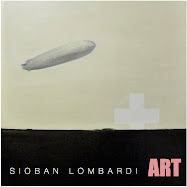
Although initially considered for purchase when first completed in 1955, the Museum of Modern Art finally acquired Robert Rauschenberg’s exemplary combine, Rebus, in 1995. The vast work, constructed from three panels and spanning more than 11 feet, constitutes Rauschenberg's seemingly innate ability to amalgamate assemblage, collage, painting, drawing, sculpture and calligraphy into works that continue to address the traditional notions of those mediums, while remaining aesthetically stunning and visually thought provoking.
The work gathers its name from the Latin for a puzzle of images and words. It is through assemblage that the linguistic aspect of art began to assert its significance. Reading this work is as essential as seeing the work. Indeed, the title also references the use of a pictogram to represent a syllabic sound.
Initially Rauschenberg’s talent for incorporating both the found detritus of high and low culture was shocking. In Rebus we absorb a reproduction of Botticelli’s Birth of Venus applied to the canvas next to comic strips, news print athletes, pieces of fabric and part of a tabloid sized poster, that run horizontally across all three canvases. The imagery is propped up by a full spectrum of paint sample color chips, and expressive, gestural applications of paint. In addition the work is marked by the type of écriture evidenced in the work of Cy Twombly, and visible in the adjacent Leda and the Swan, 1962
Mounted on the wall, Rebus exists in the object space somewhere between painting and sculpture, a space that Rauschenberg persistently and successfully questioned during this period.
Rauschenberg once said that Rebus was intended to be "a record of the immediate environment and time”. Now, nearly a year after his death, and a half-century after its completion, one is able to absorb this combine’s content at some critical distance. The images found within the combine are not particularly relevant to current culture. Rebus’ material content now seems to reference those formal components that have historically defined art: image, color, material and surface. What Rebus will continue to imply is that significant art demonstrates a trajectory that pays homage to its history, reflects its culture and pushes its way into the future.








.jpg)


